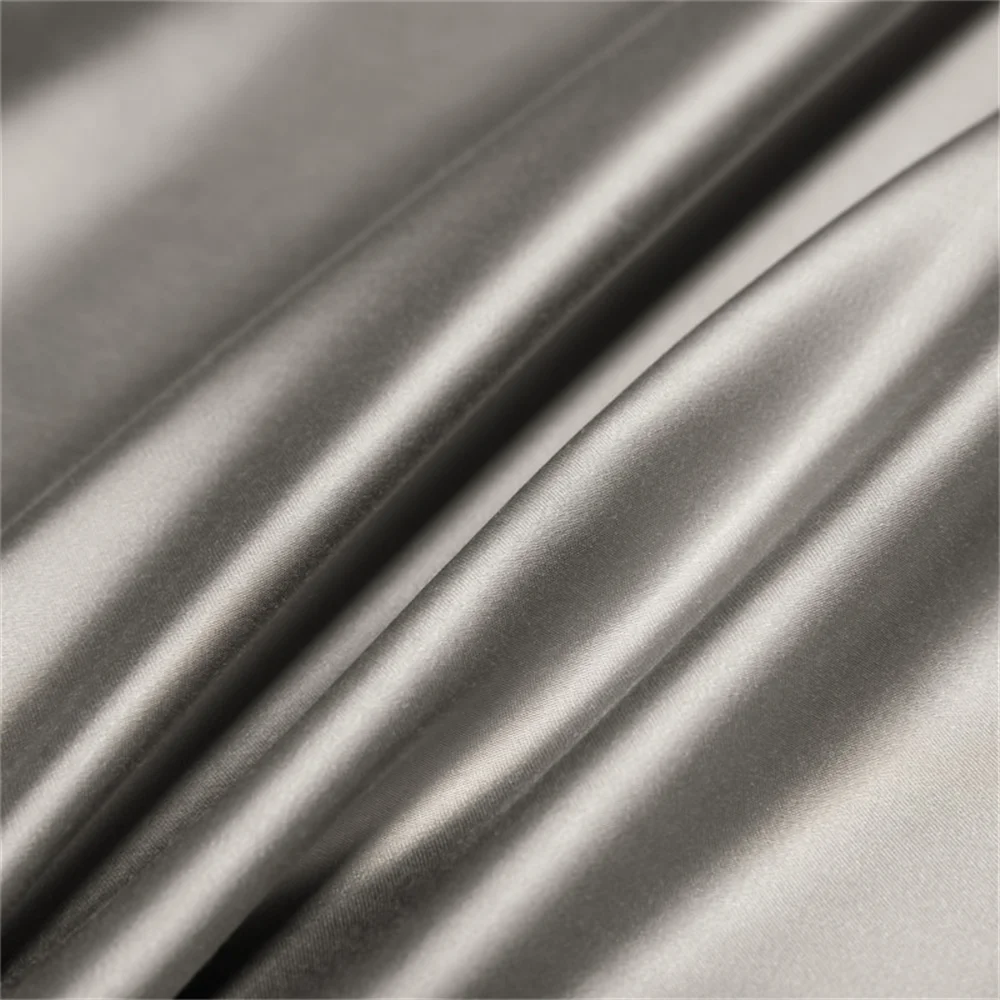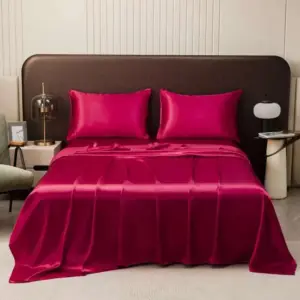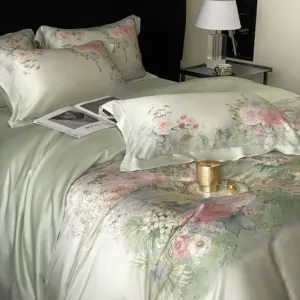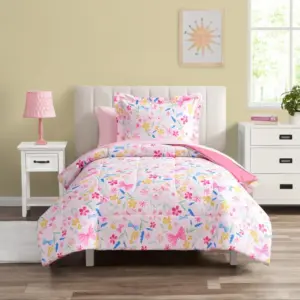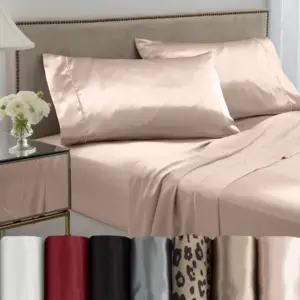Introduction: The Art and Science of Luxurious Silk Bedding Layers
Bedding layering is much more than simply making a bed—it’s a thoughtful composition of textiles that creates both optimal comfort and visual elegance. At the pinnacle of this art form sits silk, the ultimate premium material that transforms an ordinary bedroom into a personal sanctuary of luxury. For centuries, silk has adorned the beds of royalty and the elite, cherished not just for its incomparable softness but for its remarkable practical qualities.
Silk stands apart from all other bedding materials through its exceptional characteristics:
- Natural temperature regulation that keeps you cool in summer and warm in winter
- Hypoallergenic properties that protect sensitive sleepers
- Gentle interaction with skin and hair, preventing creases and breakage
- A distinctive luminous sheen that elevates any bedroom aesthetic
Here at Sanctuary Soft, our dedication to premium Mulberry silk products in the 19-25 momme weight range ensures you experience silk at its finest—the perfect balance between sumptuous luxury and lasting durability. In this guide, we’ll explore how to create the perfect silk-layered bed, from essential components to seasonal adaptations, ensuring you unlock the full potential of this extraordinary material.
Understanding the amazing benefits of Mulberry silk sheets provides the perfect foundation for appreciating why silk deserves the central role in your bedding strategy. Before diving into specific techniques, it’s worth exploring what makes Mulberry silk special and distinct from other varieties of silk and bedding materials available today.
Why Silk Is the Ultimate Luxury Bedding Material
Unparalleled Molecular Structure
Silk’s superiority begins at the molecular level. Each silk fiber consists of long protein chains arranged in a crystalline structure that creates an incredibly smooth surface. This natural architecture results in a material that glides across skin with virtually no friction—a quality no synthetic material has successfully replicated.
Natural Temperature Regulation
Perhaps silk’s most remarkable quality is its ability to regulate temperature. Silk fibers can absorb up to 30% of their weight in moisture without feeling damp, wicking perspiration away from the body during warm nights. Simultaneously, these same fibers create tiny air pockets that provide insulation during cooler weather, maintaining your ideal sleep temperature year-round.
Hypoallergenic Excellence
For those with sensitive skin or allergies, silk offers natural protection. The tight weave and protein structure of silk naturally resist dust mites, mold, and mildew—common triggers for allergic reactions. Additionally, silk doesn’t trap dust and dander like many other fabrics, making it an ideal choice for allergy sufferers.
Skin and Hair Benefits
The exceptional smoothness of silk provides significant beauty benefits. The reduced friction means less tugging on facial skin, helping prevent sleep wrinkles over time. For hair, silk minimizes breakage and frizz by allowing strands to glide across the surface without snagging. Silk also helps maintain natural moisture levels in both skin and hair by absorbing far less of your skin’s natural oils compared to cotton and other materials.
Exceptional Durability
Quality silk, particularly Mulberry silk in the 19-25 momme range, offers surprising durability despite its delicate appearance. When properly cared for, silk bedding can maintain its beauty and function for many years, making it a wise investment in your comfort and wellbeing.
Visual Luxury
Beyond its functional benefits, silk possesses an unmistakable visual allure. Its natural sheen catches and plays with light, creating a subtle luminosity that immediately communicates luxury. The way silk drapes and moves creates a fluid, elegant appearance that elevates any bedroom design from ordinary to extraordinary.
The Mulberry silk bedding skin benefits extend far beyond basic comfort—they represent a nightly investment in your skin’s health and appearance. For those ready to experience these benefits, our collection of Mulberry silk bedding sets offers numerous options to begin your journey into luxury sleep.
Essential Silk Bedding Components for Perfect Layering
Creating the perfect silk-layered bed requires understanding each component’s specific purpose and qualities. Let’s explore the essential elements that combine to create your ultimate sleep sanctuary:
Silk Fitted Sheets: The Foundation Layer
As the base of your bedding system, silk fitted sheets serve as the primary surface in direct contact with your skin throughout the night.
- Ideal Momme Weight: 22-25 momme for optimal durability and softness
- Benefits: Maximizes skin and hair benefits through direct contact; provides the foundation of temperature regulation
- Key Features: Deep pockets with elastic for secure fit; fully-enclosed elastic preferred for preventing slippage
The silk fitted sheets serve as the cornerstone of your silk bedding system, providing the closest contact with your body throughout the night.
Silk Flat Sheets: The Comfort Layer
Positioned between you and your duvet or comforter, the flat sheet adds an additional layer of temperature control and comfort.
- Ideal Momme Weight: 19-22 momme for perfect drape and breathability
- Benefits: Provides additional temperature regulation; creates a protective barrier for your duvet; adds visual dimension when folded back
- Key Features: Generous dimensions for proper tucking; subtle sheen that complements other bedding layers
Silk Duvet Covers: The Protective Luxury Layer
Encasing your duvet or comforter, silk covers combine protection with unparalleled luxury.
- Ideal Momme Weight: 19-22 momme balances weight and durability
- Benefits: Enhances the insulating properties of your duvet; protects your duvet investment; provides a large canvas for introducing color and texture
- Key Features: Hidden closures (buttons or ties); interior ties to secure duvet; double-sided options for versatile styling
Silk-Filled Duvets/Comforters: The Insulating Layer
Filled with natural silk fibers, these provide exceptional temperature regulation through all seasons.
- Ideal Fill Weight: Varies by season (lighter for summer, heavier for winter)
- Benefits: Superior insulation without overheating; naturally adjusts to body temperature; lightweight yet warm
- Key Features: Box-stitched construction to prevent fill migration; available in various weights for seasonal adaptation
Silk Blankets and Throws: Versatile Accent Layers
These smaller silk pieces add visual interest and provide targeted warmth where needed.
- Ideal Momme Weight: 16-19 momme for fluid draping quality
- Benefits: Adds textural interest; provides additional warmth for specific body areas; easily adjustable for temperature regulation
- Key Features: Decorative edges or patterns; slightly smaller dimensions for easy handling; often features richer colors for visual impact
Silk Pillowcases: The Essential Sleep Surface Layer
Perhaps the most well-known silk bedding component, pillowcases provide direct benefits to facial skin and hair.
- Ideal Momme Weight: 22-25 momme for durability and smoothness
- Benefits: Reduces facial creasing; minimizes hair breakage and frizz; extends the life of skincare products
- Key Features: Envelope closures to secure pillows; available in various sizes to accommodate different pillow types
Our collection of silk sheets includes options for every preference, whether you’re looking for vibrant colors or classic neutrals to build your perfect bedding foundation.
The Art of Layering: Creating Your Silk Bedding Sanctuary Step by Step
Creating the perfect silk-layered bed requires both technique and artistry. Follow this sequential guide to achieve both maximum comfort and visual appeal:
1. The Foundation Layer: Protection and Fitted Sheets
Begin with a quality mattress protector to safeguard your mattress investment. Then apply your silk fitted sheet, ensuring it’s pulled taut at all corners for a smooth, wrinkle-free foundation. Take care to center the sheet perfectly, as this sets the stage for all subsequent layers.
Technique Tip: Lift your mattress slightly when applying each corner rather than forcefully pulling the fabric, reducing stress on the silk fibers.
2. The Core Layer: Incorporating Silk Flat Sheets
Position your flat sheet with the top hem aligned approximately 4-6 inches from the head of the mattress. For a luxury hotel finish, create hospital corners by tucking the bottom edge under the mattress, then folding the hanging side section at a 45-degree angle before tucking it underneath. Leave the sides above the foot untucked for easier access.
Technique Tip: European-style bedding often skips flat sheets entirely, moving directly from fitted sheet to duvet. For a modern approach, consider this streamlined option with silk pillowcases providing the necessary skin and hair benefits.
3. The Comfort Layer: Adding the Silk Duvet/Comforter
Center your silk-encased duvet or comforter on the bed, positioning it so the top edge aligns with the top of the flat sheet (or just below the pillows if using the European approach). For visual interest, fold the top edge back approximately 15-18 inches to create a distinctive band that showcases any contrasting colors or complementary fabrics.
Technique Tip: Shake the duvet from the bottom corners to evenly distribute the filling before placing it on the bed, ensuring consistent loft and insulation.
4. The Accent Layer: Introducing Silk Throws and Blankets
Position your silk throw in one of three classic arrangements:
– The Horizontal Fold: Placed neatly across the foot of the bed
– The Diagonal Drape: Casually arranged from one corner toward the center
– The Cascade: Folded in thirds and draped over one side of the bed
Technique Tip: For maximum texture, loosely scrunch the throw rather than creating perfect folds, allowing the silk’s natural draping quality to create organic visual interest.
5. The Finishing Touch: Arranging Silk Pillows
Build your pillow arrangement from back to front:
1. Start with European square pillows (26”×26”) against the headboard
2. Layer standard or king sleeping pillows in silk pillowcases in front
3. Add decorative accent pillows in complementary colors or patterns
Technique Tip: For sleeping pillows, the “karate chop” technique—gently chopping the top center of each pillow—creates an inviting, lived-in look while showcasing silk’s natural ability to create soft folds.
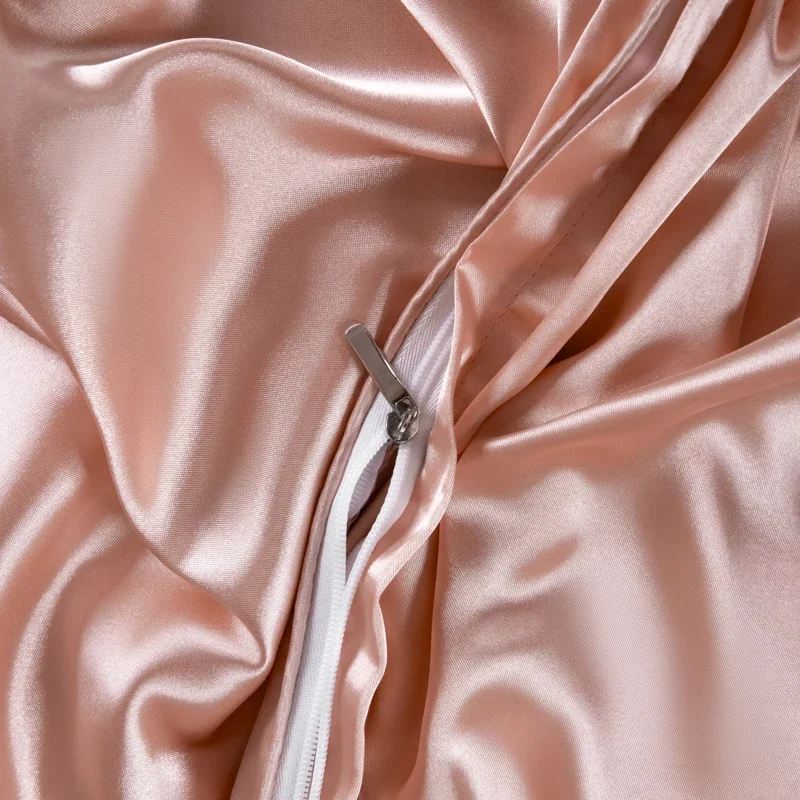
Understanding how to effectively layer bedding with quilts and duvets opens up even more possibilities for creating your perfect sleep environment. Complete your silk sanctuary with perfectly selected silk pillowcases that protect your skin and hair while adding the final touch of luxury to your bedding arrangement.
Enhancing Your Silk Bedding with Complementary Materials
While silk creates a stunning bedding foundation, strategically pairing it with complementary materials can enhance both comfort and visual appeal. The key lies in understanding which materials harmonize with silk’s unique properties while adding their own beneficial characteristics.
Silk + Egyptian Cotton: The Perfect Balance
This classic combination pairs silk’s smooth luxury with cotton’s structured crispness. Use Egyptian cotton fitted sheets beneath silk flat sheets for enhanced mattress grip, or alternate cotton and silk pillowcases for visual variety.
Ideal Proportion: 60% silk to 40% cotton creates balanced texture without sacrificing silk’s benefits
Best For: Traditional bedroom aesthetics and those who appreciate a slightly more structured feel
Silk + Linen: Creating Textural Contrast
This pairing juxtaposes silk’s refinement with linen’s casual, organic texture. Consider a linen duvet cover with silk sheets, or layer a textured linen throw across silk bedding for a contemporary, lived-in elegance.
Ideal Proportion: 70% silk to 30% linen maintains luxury while introducing appealing textural variation
Best For: Modern, relaxed bedroom styles and seasonal transitions
Silk + Cashmere: The Ultimate Winter Luxury
For cooler months, this combination delivers unmatched coziness without sacrificing sophistication. Introduce cashmere through throws or blankets layered over silk bedding foundations.
Ideal Proportion: 80% silk to 20% cashmere creates warmth without overwhelming silk’s benefits
Best For: Winter comfort and creating visual warmth in minimalist spaces
For those seeking silk’s benefits with alternative materials, our vegan silk bedding collection offers exceptional options that pair beautifully with authentic silk pieces while providing similar properties.
Seasonal Strategies: Adapting Your Silk Layers Throughout the Year
One of silk’s greatest attributes is its adaptability across seasons. By strategically adjusting your silk layers throughout the year, you can maintain optimal sleeping comfort regardless of temperature fluctuations.
Spring: Transitional Layering
As temperatures begin to rise, adapt your bedding for increased breathability:
– Use lightweight silk flat sheets (19 momme)
– Fold duvets at the foot of the bed for optional warmth
– Incorporate a light silk blanket that can be easily removed
– Choose pastel or floral silk accessories that reflect the season
Technique Tip: Create a “half-and-half” duvet approach, folding it to cover only the lower portion of the bed for nights when temperatures fluctuate.
Summer: Minimal Cooling Comfort
During the warmest months, simplify your silk layers to maximize cooling properties:
– Use only silk fitted sheets and lightweight flat sheets
– Replace heavy duvets with a single silk-filled summer-weight blanket
– Position a silk throw nearby for occasional cool evenings
– Opt for lighter colors that reflect rather than absorb heat
Technique Tip: Store winter silk items in breathable cotton bags with cedar blocks to protect against moths and maintain freshness.
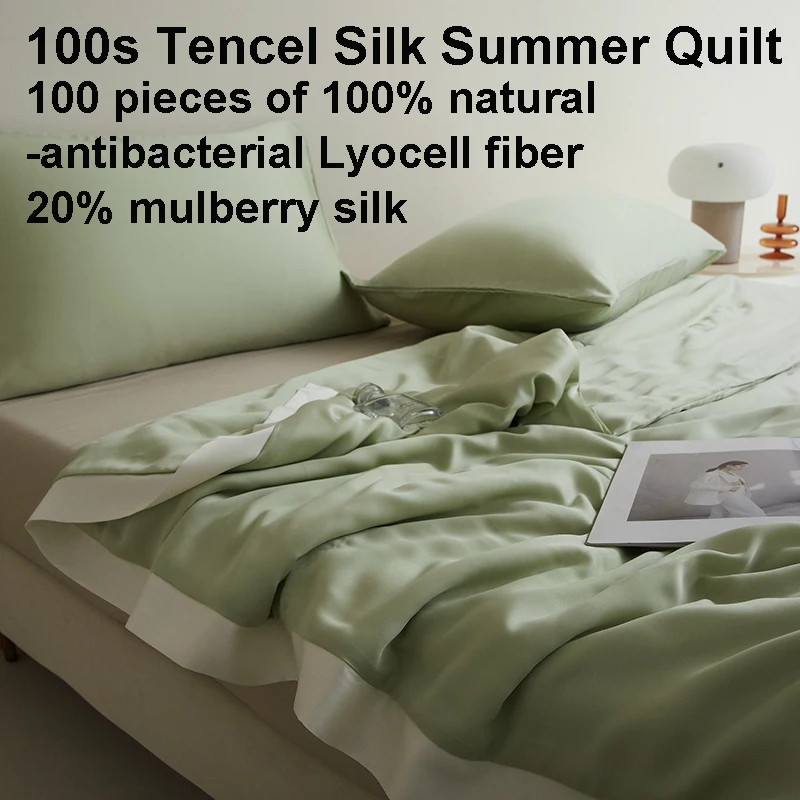
Fall: Building Progressive Warmth
As temperatures cool, gradually reintroduce warmth through strategic layering:
– Add medium-weight silk-filled duvets (transitional weight)
– Incorporate silk throws for both decoration and function
– Consider warmer color palettes in rust, amber, or deep green
– Begin using slightly heavier silk flat sheets (22 momme)
Technique Tip: Layer a silk blanket between your flat sheet and duvet for adjustable warmth without changing your entire bedding set.
Winter: Maximum Insulation
During the coldest months, maximize silk’s insulating properties:
– Use the complete silk layering system with maximum components
– Opt for winter-weight silk-filled duvets or comforters
– Layer multiple silk blankets in varied textures
– Consider silk pillow shams and additional decorative elements for cocoon-like warmth
Technique Tip: Position a silk throw folded at the head of the bed for easy access during particularly cold nights—it can be pulled up for extra warmth without disturbing your bedding arrangement.
Understanding how silk bedding provides year-round comfort allows you to make the most of this versatile material. Silk’s natural ability to regulate sleep temperature makes it uniquely suited for creating comfortable sleep environments regardless of season.
Design and Styling: Creating Visually Stunning Silk-Layered Beds
Beyond comfort, silk bedding creates opportunities for exceptional visual design. The material’s natural luminosity and draping quality make it the perfect canvas for creating a visually stunning focal point in your bedroom.
Color Theory for Silk Bedding
Silk’s natural sheen amplifies and enriches color in unique ways:
- Monochromatic Schemes: Create depth by using various shades of a single color family (ivory to caramel, silver to charcoal)
- Complementary Colors: Pair opposite colors on the color wheel for dramatic impact (deep purple silk sheets with amber throws)
- Tonal Harmonies: Layer similar colors with subtle variations for sophisticated elegance
Design Tip: Lighter silk colors showcase the material’s natural sheen most effectively, while deeper tones create a more subtle, matte appearance with greater visual weight.
Balancing Textures for Visual Interest
Even within silk products, texture variation creates sophisticated dimension:
- Contrast smooth charmeuse silk sheets with slightly more textured silk throws
- Introduce different weave patterns in accent pieces while maintaining color harmony
- Position textured elements strategically to draw attention to the bed’s architecture
Design Tip: When using multiple silk textures, maintain consistency in quality and weight to preserve the overall luxury aesthetic.
Layering Techniques for Different Aesthetic Goals
Adapt your approach based on your desired bedroom style:
- Minimalist: Clean lines, precise folds, and limited color palette with emphasis on silk’s natural luster
- Luxurious: Multiple layers, abundant pillows, and rich, jewel-toned silks with varied textures
- Casual Elegant: Intentionally relaxed folds, asymmetrical arrangements, and a blend of silk with complementary natural fibers
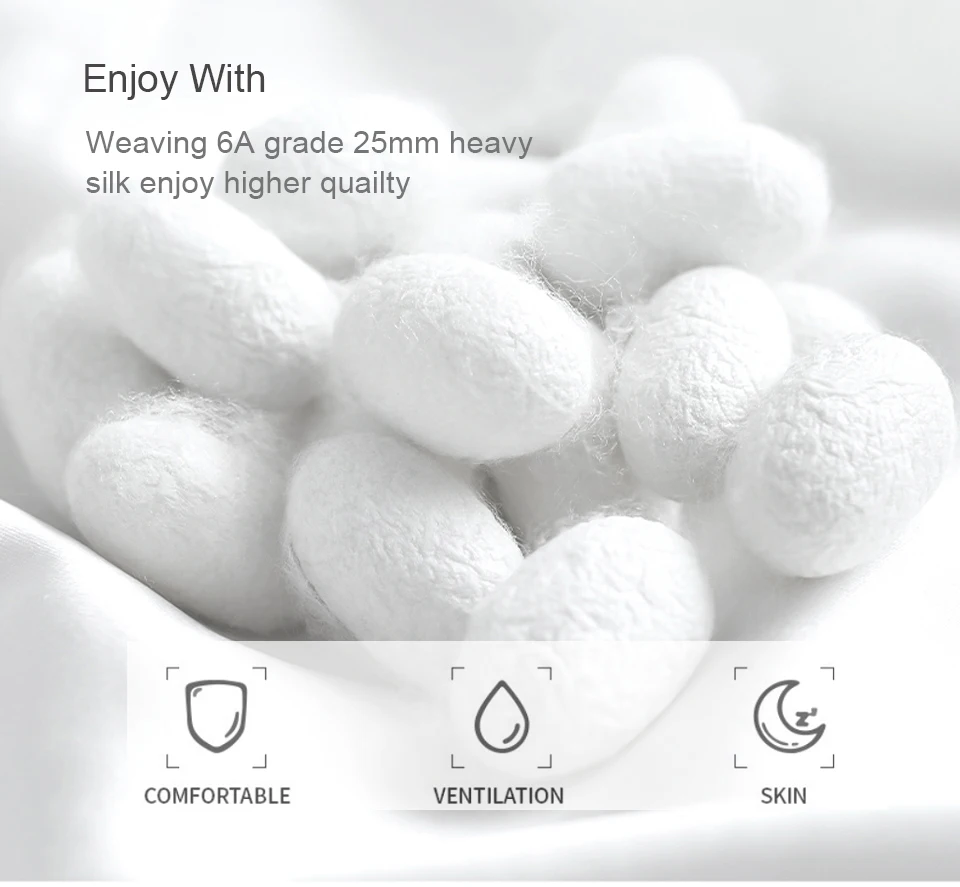
Creating a personalized bedroom retreat involves customizing your room’s look with silk, allowing you to express your unique style while maintaining the material’s inherent luxury.
Essential Care for Your Silk Bedding Layers
Proper maintenance ensures your silk bedding retains its beauty and performance for years to come. Follow these essential care guidelines to protect your investment:
Washing Protocols
- Use pH-neutral detergents specifically formulated for silk (pH 7.0-7.5)
- Wash in cold water (30°C/86°F or below) on the most gentle cycle available
- Turn duvet covers and pillowcases inside out before washing to protect the finish
- Separate colors and always wash silk items separately from other fabrics
- Avoid overloading the washing machine to prevent unnecessary friction
Drying Methods
- Never tumble dry silk bedding—heat damages protein fibers
- Gently press (don’t wring) excess water from silk items
- Air dry flat on a clean white towel away from direct sunlight
- For faster drying, replace the towel beneath the item when it becomes damp
- Allow items to dry completely before storing or using
Storage Practices
- Store fully dry silk items in cool, dry places away from direct sunlight
- Use breathable cotton storage bags rather than plastic containers
- Place acid-free tissue paper between folds to prevent permanent creasing
- Never store silk in cedar chests without proper protection—the oils can damage fibers
- Avoid hanging silk bedding items as this can stretch the material over time
Handling Spills and Stains
- Address spills immediately by blotting (never rubbing) with a clean, dry cloth
- For water-based stains, use a small amount of silk-specific detergent diluted in cold water
- For oil-based stains, consult a professional cleaner—home remedies often set stains permanently
- Never use bleach, stain removers, or spot treatments not specifically formulated for silk
For comprehensive guidance on maintaining your silk investments, the complete guide to Mulberry silk bed sheets provides detailed care instructions for all components of your silk bedding collection.
Expert Answers: Your Silk Bedding Layering Questions
What momme weight provides the best balance of durability and luxury?
For bedding that combines longevity with luxurious feel, 19-22 momme represents the optimal balance. At this weight range, silk remains lightweight and drapes beautifully while offering sufficient durability for regular use. For items with direct skin contact (fitted sheets and pillowcases), consider 22-25 momme for enhanced durability without sacrificing softness. Understanding momme rating explained for silk quality helps you make informed choices based on each component’s specific function.
Can I mix different types of silk in my layering strategy?
Absolutely, though with thoughtful consideration. While Mulberry silk should remain your foundation material for items touching your skin, you might incorporate wild Tussah silk in decorative throws for interesting texture variation. The key is maintaining consistent quality while introducing subtle variations in texture or finish that enhance rather than disrupt the overall aesthetic.
How do I prevent silk sheets from slipping on the mattress?
Silk’s smooth surface can indeed create slippage challenges. Choose fitted sheets with full elastic encasement and deep pockets that accommodate your mattress height with at least 2-3 inches to spare. Silk-to-silk contact (silk fitted sheets against silk flat sheets) creates the most slippage, so consider using sheet suspenders or clips to secure the fitted sheet to the mattress, particularly for adjustable beds.
Is silk bedding worth the investment compared to other luxury materials?
When evaluating cost-per-use and considering silk’s unique benefits, high-quality silk bedding typically offers superior value compared to other luxury materials. Unlike cotton which deteriorates with each washing, properly maintained silk bedding often retains its benefits for many years. Additionally, silk’s health and beauty advantages—improved skin hydration, reduced hair breakage, natural temperature regulation, and hypoallergenic properties—provide value beyond mere aesthetics.
How do I know if I’m purchasing authentic Mulberry silk?
Authentic Mulberry silk has a distinctive smooth, uniform texture with a subtle sheen rather than high gloss. When purchasing, verify the momme weight is clearly stated (quality silk typically ranges from 16-30 momme), and the fabric should feel substantial but not heavy. A simple burn test (performed on an inconspicuous thread) will confirm protein fiber content—silk burns slowly, smells like burning hair, and leaves crushable ash rather than melted residue.
California King Silk Fitted Sheet, King Size Silk Fitted Sheet, Mulberry Silk Fitted Sheet, Queen Size Silk Fitted Sheet
Price range: $120.04 through $390.79 Select options This product has multiple variants. The options may be chosen on the product pageFull-size Silk Sheets, King Size Silk Sheets, Queen Size Silk Sheets, Twin Size Silk Sheets, Washable Silk Sheets
Price range: $95.95 through $178.37 Select options This product has multiple variants. The options may be chosen on the product page100% Silk Sheets, Green Silk Sheets, King Size Silk Bedding Set, Mulberry Silk Bedding Sets, Queen Size Silk Bedding Set
Price range: $1,246.21 through $1,615.22 Select options This product has multiple variants. The options may be chosen on the product pageEucalyptus Silk Bedding Sets, Eucalyptus Silk Sheets
Price range: $360.24 through $393.60 Select options This product has multiple variants. The options may be chosen on the product pagePink Silk Sheets, Twin Size Silk Sheets
$171.80 Select options This product has multiple variants. The options may be chosen on the product pageFull-size Silk Sheets, Pink Silk Sheets
$136.31 Select options This product has multiple variants. The options may be chosen on the product page
Beyond Bedding: Extending the Silk Experience in Your Bedroom
While layered silk bedding forms the centerpiece of a luxury bedroom, extending silk’s presence throughout your space creates a cohesive sanctuary experience. Consider these complementary silk elements to enhance your bedroom environment:
- Silk sleep masks block light completely while providing skin benefits identical to silk pillowcases—perfect for sensitive skin and preventing sleep creases
- Silk-covered headboards create textural continuity from your bedding to your furniture, amplifying the sense of luxury
- Silk curtains and drapery filter light beautifully while maintaining the same temperature-regulating properties as your bedding
- Silk-upholstered bedroom seating extends the tactile luxury experience to reading nooks or vanity areas
When selecting these complementary items, maintain consistency in silk quality and color palette to create a harmonious environment. The goal isn’t to match perfectly but to create intentional coordination that enhances your bedroom’s sense of cohesive luxury and comfort.
By thoughtfully layering silk throughout your sleeping environment, you transform an ordinary bedroom into an extraordinary retreat that supports both physical wellbeing and aesthetic satisfaction. The result is a personal sanctuary that welcomes you each night and rejuvenates you every morning—the ultimate expression of silk’s timeless luxury.

